Abstract
This paper presents preliminary results of an acoustic study of Futa Tooro, a dialect of Pulaar spoken in the region on the Senegal River. The study explores acoustic correlates of focused subjects, in comparison with unfocused subjects in information structures, in addition to the syntax and verb conjugation system. Focus in Pulaar is referred to as a constituent that introduces new or highlighted information into discourse and that potentially receives contrastive stress (McIntosh 1984). Declarative utterances are examined where subjects are read as nonfocus, informative focus as answers to Wh-questions and contrastive focus as corrections (i.e., negative answers) to Yes/No-questions. Acoustic parameters, such as duration, fundamental frequency and intensity, are examined in terms of focus condition, co-occurrence of emphasis particle ko, and completeness of sentence. The results show that contrastive focus is uttered with longer duration than informative focus and nonfocus subjects. Both contrastive and informative foci have greater intensity than nonfocus. Pitch modification is not significant for focus implementation. Moreover, foci preceded by ko and in complete long sentences have greater intensity than those without the particle or in incomplete short sentences. Examinations on time-normalized intensity and pitch contours indicate that when foci are realized with ko, pitch range is expanded in the focused position and compressed in the post-focal verb domain.
Zusammenfassung
Der Artikel stellt vorläufige Ergebnisse einer akustischen Untersuchung des Futa Tooro, einem Dialekt des Pulaar vor, der in der Region des Senegalflusses verbreitet ist. Untersucht werden akustische Korrelate von fokussierten Subjekten im Vergleich zu nicht fokussierten. Mit Fokus bezieht man sich im Pulaar auf diejenige Konstituente, die neue oder betonte Information in den Diskurs einführt und die möglicherweise kontrastive Betonung erhält (McIntosh 1984). Deklarative Sätze, deren Subjekte nicht fokussiert werden, informativer Fokus in Antworten auf ja/nein-Fragen und kontrastiver Fokus in Korrekturen (d.h. negierenden Antworten) von Vorannahmen in ja-nein-Fragen werden vergleichend untersucht. Die Ergebnisse zeigen, dass kontrastiver Fokus mit mehr Längung verbunden ist als informativer Fokus und als nicht fokussierte Subjekte. Sowohl kontrastiver als auch informativer Fokus zeigen größere Intensität als nicht fokussierte Subjekte. Die Änderung des Pitch ist dagegen nicht signifikant. Darüber hinaus haben fokussierte Konstituenten, denen in vollständigen langen Sätzen die Partikel ko vorangeht, größere Intensität als solche ohne diese Partikel in vollständigen kurzen Sätzen. Untersuchungen von zeit-normalisierter Intensität und Pitch-Konturen zeigen eine Ausdehnung des Pitch im fokussierten Bereich, falls die Fokussierung von der Partikel ko begleitet wird, während sie im post-fokalen Bereich des Verbs dagegen komprimiert wird.
<1>
A focused element can either carry new information or be used in contrasting contexts. Informative focus (or presentational focus) can be answers to Wh-questions which convey new non-presupposed information (Drubig 2003, Kiss 1998). Contrastive focus is a constituent that distinguishes itself within a set of contextually given alternatives that may occur in the same position in spontaneous speech (Drubig & Schaffar 2001, Lehiste 1976). A negative answer to a Yes/No-question which rejects and fully replaces what is ‘given’ in the question is considered as a case of contrastive focus. Examples of English informative and contrastive foci are listed in Example 1.
|
Informative focus and contrastive focus in English |
|
|
(1a) |
Informative focus |
|
[Students in Linguistics Department] informative focus participated in the lexical tone perception experiment yesterday. |
|
|
(As an answer to ‘Who participated in the lexical tone perception experiment yesterday?’) |
|
|
(1b) |
Contrastive focus |
|
No, it was students in the [Linguistics] contrastive focus Department who participated in the lexical tone perception experiment yesterday. |
|
|
(As a negative answer to ‘Was it students in the History Department who participated in the lexical tone perception experiment yesterday?’) |
|
<2>
Previous work on the expression of focus (encompassing both types in Example 1) shows that, cross-linguistically, focused elements can be made prominent in prosodic and/or syntactic ways (Downing 2004b, c; Gussenhoven 2004, Jacobs 1993, Ladd 1996). Prominence is defined as words that are perceived auditorily by speakers of the given language as standing out from their environment (Kratochvil 1998, Streefkerk, Pols & ten Bosch 1999, Terken 1994). When a focused element is prosodically prominent, it bears intonational accent with low speed, great loudness and pitch raising (Beckman 2006). Though the acoustic parameters, such as duration, intensity and fundamental frequency, can be involved to realize prominence, it is not necessarily that all of them are involved simultaneously to mark prosodic prominence. The syntactic prominence is generally achieved by placing the focused element in a particular position in a sentence, such as at the front; by the use of constructions like clefts; by attaching a focus particle to the element and so forth.
<3>
Most European stress languages mark focus with prosodic prominence. Some languages adopt both prosodic and syntactic strategies to mark focus. For example, focused elements in English can be accented with prosodic prominence, moved to the sentence initial position, or generated in a cleft construction as described by Frota (2000). Among the three sentences listed in Example 2, the word ‘bananas’ is the focused element, achieved by intonational accent in (2a), preposing in (2b), and the cleft structure in (2c).
|
Interaction of focus prosody and grammar in English (from Frota 2000) |
|
|
(2a) |
I like [bananas] Focus for breakfast, not just toast. |
|
(2b) |
[Bananas] Focus, I like. |
|
(2c) |
It’s [bananas] Focus that he’s allergic to. |
<4>
Research on European languages and Bantu languages indicate that languages do not always use the same strategies, such as intonational accent, to highlight focused elements. Studies on two Bantu languages spoken in Malawi - Chichewa and Chitumbuka - also provide examples of focused elements that can be prosodically and syntactically prominent (Downing 2006, Downing, Mtenje & Pompino-Marschall 2004). In Example 3, sentence (3a) indicates that the sentence final position, originally influenced by intonational downstep, can maintain the pitch value as high as the previous part when it is focused. Sentence (3b) shows boundary narrowing, where the focused element followed by pause can segment the whole sentence to more phrases. Sentence (3c) is a cleft structure, which also marks the focus.
|
Interaction of focus prosody and grammar in Chichewa and Chitumbuka [1] |
|||||
|
Chichewa |
|||||
|
(3a) |
(A-ná-ménya |
nyuúmbá) |
(ndí |
mwáálá) |
[no downstep] |
|
s/he-tense-hit |
house |
with |
rock |
||
|
‘She hit the house with a rock.’ [Without downstep, emphasize ‘rock’] |
|||||
|
(3b) |
(A-ná-ménya |
nyuúmbá) ||! |
(ndí |
mwáálá) |
||
|
s/he-tense-hit |
house |
with |
rock |
|||
|
‘He hit the house with a rock.’ [An answer to ‘What did he hit with a rock?’, |
||||||
|
Chitumbuka |
||||||
|
(3c) |
(Ni |
mwanalúume)! |
(wa-ku-bwatísya |
máji |
ya |
mpúunga) |
|
Cleft |
man |
s/he-tense-boil |
water |
for |
rice |
|
|
‘It is the man (and not someone else previously mentioned) |
||||||
<5>
Other languages may mainly adopt one strategy to express focus. Zerbian’s (2004) research on Northern Sotho shows prosody is not used to signal focus. No perceptible distinction in the realization of pitch or other prosodic cues has been observed in her focused data. The language presents an interaction between information structure and syntactic position by left-dislocating the focused element to express contrast.
<6>
Compared with European and Bantu languages, very little attention has been devoted to the Atlantic branch of the Niger-Congo family regarding the interaction of focus, prosody and syntax. Rialland and Robert (2001) claim that Wolof (of the Atlantic branch) uses verbal inflection to mark focus rather than intonational marking. They argue that focus entails no change in the melodic contour of the utterance, but is grammaticalized and expressed in the verb inflection (as in Example 4). Focus is realized in a simple unmarked intonation of an ordinary declarative sentence, that is low pitched and completely flat except for the final boundary tone. No other languages have been reported to have this flat intonation pattern to such an extent.
|
Focusing conjugation in Wolof |
|||||
|
(4a) |
Sentence without focused element |
||||
|
Peer |
lekk |
na. |
|||
|
Peer |
eat |
PFT3SG |
|||
|
‘Peer has eaten.’ |
|||||
|
(4b) |
Verb focus (emphatic) |
||||
|
Peer |
dafa |
Lekk |
|||
|
Peer |
VBEMPH3SG |
Eat |
|||
|
‘Peer did eat.’ (dafa is the inflectional modifier |
|||||
<7>
Pulaar is a non-tonal language in the Atlantic branch of the Niger-Congo family. Stretching from Senegal to Nigeria, Cameroon, CAR chad and Sudan, 26 million Fula people speak 41 dialects of Pulaar, such as Fouta Jallon, Fulacounda and Futa Tooro in Senegambia and neighboring West African countries. A large majority of Pulaar speakers are Muslims and the other major language they use is Wolof, the trade language of Senegal. French is also spoken, although mostly among the younger generation. Fouta Jallon dialect is spoken in Guinea (Conakry) and found in southern Guinea-Bissau as well. Fulacunda dialect is spoken in the Fulado between Kolda and Velingara in the Casamance region of Southern Senegal. This region reaches into Guinea-Bissau (and Guinea-Conakry) to the South, and the Gambia in the North. Pulaar spoken in the northern Senegal (the region on the Senegal River) and southern Mauritania regions is known as the Futa Tooro (see Chart 1). Speakers identified themselves by the language giving rise to the name Haalpulaar'en meaning those who speak Pulaar. The Haalpulaar'en are also known as Toucouleurs, a name derived from the ancient state of Tekrur (Lewis, 2009). Informants in this research are speakers of Futa Tooro dialect.
|
Map 1 |
|
|
|
Area of diffusion of the Fula Tooro dialect in Senegal. (Source: http://www.joshuaproject.net/people-profile.php?peo3=11770&rog3=SG ) |
<8>
As Arnott (1970) states, Fula is an intonational language, in the sense that the main outlines of the pitch contours of a sentence are determined by the type of sentence, rather than by the tonal characteristics of individual words. Normal declarative utterances have an intonation contour where pitch lowering occurs on each stressed syllable. The last syllable in a declarative sentence has the lowest pitch (Breedveld 1995: 138). McIntosh (1984) describes normal declarative utterances as sentences which declare new information. The essence of the messages in these utterances is derived from the customary semantic properties and syntactic functions of their verbs. For example, in the sentence of keenya Bello yahii luumo. (Yesterday Bello went to the market.), the core of the message is Bello’s going to the market rather than the time (yesterday) or the place (market). On the contrary, McIntosh refers non-declarative sentences to utterances which emphasize on other elements of the utterance rather than merely the action, thus the verb plays a secondary role. For example, ‘keenya Bello yahi luumo.’ (It is yesterday that Bello went to the market.).There is an emphasis on the time (yesterday) [2].
<9>
Emphasized elements may be noun phrases (NP),or propositional phrase (PP), They are indicated morphologically by verbal conjugation, and syntactically by word order and emphasis particles (Fagerberg 1982, McIntosh 1984). Object fronting from SVO to OSV directs the focus to the object in the sentence of ‘deftere o meemi’ (‘It is a book that he touched’), in comparison to the original sentence of ‘O meemii deftere’ (He touched a book.). Particles, such as ko, are used to realize focus in the sentence of ‘Mi anndaa ko o nyaami’ (‘I do not know what he ate.’) (Abu-Manga 1984: 41-42).
<10>
Superficially, a focused NP resembles a topic NP insofar as it occurs at the beginning of a sentence (McIntosh 1984: 215). The NP may be a subject in the sentence pattern of SVO or other parts of a sentence as a result of fronting. It is to be expected that the topic represents ‘given’ information about which comment is made, and therefore more naturally occurs before the comment. Focus refers to a constituent that introduces new or highlighted information into the discourse. Questions involving a question-word are syntactically very similar to sentences involving a focused NP. Question-word and focused NP fill the same syntactic paradigm (cf. Examples 5).
|
Examples of Interrogative and NP focus in Pulaar |
|
(5a) |
Wh-question |
|
|
Dum |
danya-aa? |
|
|
What |
bear VAP |
|
|
What has she had? |
||
|
(5b) |
NP focus with emphasis particle ko |
|||
|
Ko |
natt-i |
danya-aa. |
||
|
enter VAP |
bear VAP |
|||
|
She’s given birth to a boy. |
||||
<11>
In addition to question-induced focus, explanations of differences between focus and topic are also addressed on morphological and syntactical exponents, such as topic markers and pauses (McIntosh 1984). Topic markers include kam, boo, maa, and kammaa, which are placed immediately after a topic. Kam is the most neutral of the topic markers. Boo implies a contrast between two topics, thus is roughly equivalent to ‘on the other hand’, ‘but’, ‘however’ in English. Maa means ‘also, too’ and is used to mark a new topic whose comment is similar to the preceding one. Kammaa is equivalent to ‘moreover’ or ‘whereas’. Topic is also potentially followed by a pause indicated by a comma, and is referred to anaphorically by an object pronoun. Focus, on the other hand, is realized without potential pause or anaphoric pronoun. In Example 6, Topic ceede dee kam in (6a), is followed by a comma, and is referred to anaphorically by the object pronoun -de. Focus ceede dee in (6b) starts without potential pause, and there is no anaphoric pronoun referring to ceede dee.
|
Examples of topic and focus in Pulaar (McIntosh 1984) |
|
(6a) |
Topic |
|||
|
Ceede |
dee |
kam, |
a-yoB-ii-mo-De |
|
|
money |
this |
TM |
you pay VAP her it |
|
|
As for this money, you paid her it. |
||||
|
(6b) |
Focus |
||
|
Ceede |
dee |
njoB-u-Daa-mo |
|
|
Money |
this |
pay you her |
|
|
It’s this money you paid her. |
|||
<12>
The current research examined acoustic realizations of focus in Pulaar. Subject focus is studied together with nonfocus counterparts in declarative sentences. Factors of focus condition, presence of emphasis particle, and completeness of sentence are discussed in aspects of their effects to the realizations of acoustic parameters, such as duration, intensity and pitch.
<13>
Three native speakers of the Futa Tooro dialect of Pulaar, in their late twenties and early thirties, teaching at two state universities in the United States, proved the grammaticality of the recording materials and chose proper answers from the recording list to respond to questions (or instructions if a nonfocus declarative is involved) in a fluent comfortable and natural way. They had stayed in the United States for less than three years by the time of data collection.
<14>
Only focus in subject position was examined in this study, so the target words were comparable without being influenced by intonational downstep in declarative statements. The recorded materials consist of nonfocus declaratives, answers to Wh-questions where subjects are assigned information focus and corrective answers to Yes/No-questions where subjects obtain contrastive focus. Subjects are three trisyllabic words: Baaba Maal ‘a male name’, deBBo oo ‘the woman’, and rewBe Bee ‘the women’. Focused data expressed by pre-verb focus maker -i [3] are further divided into four categories with presence of emphasis particle and completeness of sentence, as shown in Example (7b) and (7c). (7b3-4) and (7c3-4) are incomplete sentences, though they form complete utterance, and the relationship between questions and answers can be established in discourse. Comparison between a nonfocus declarative in (7a) and focused declaratives in (7b) and (7c) shows that past tense suffix –ii and –i are in complementary distribution, where –ii is applied to verbs which play primary semantic roles in unfocused neutral sentences, whereas –i is applied to verbs which carry out secondary functions in focused sentences.
A set of recording data examples
|
(7a) |
Non-focus declarative with core information in verb action |
||||
|
Baaba Maal |
hum-ii |
puccu |
nguu |
e damal galle oo |
|
|
Baaba Maal |
tie-PFT |
horse |
DET |
in front house DET |
|
|
‘Baaba Maal tied the horse in front of the house.’ |
|||||
|
(7b1) |
Subject informative focus |
|||||
|
subject preceded by ko in a complete sentence |
||||||
|
Ko |
Baaba Maal |
hum-i |
puccu |
nguu |
e damal galle oo |
|
|
EMPH |
Baaba Maal |
tie-REL |
horse |
DET |
in front house DET |
|
|
[Answer to ‘Who tied the horse in front of the house?’] |
||||||
|
(7b2) |
Subject without the syntactic particle ko in a complete sentence |
|||||
|
Baaba Maal |
hum-i |
puccu |
nguu |
e damal galle oo |
||
|
Baaba Maal |
tie-PFT |
horse |
DET |
in front house DET |
||
|
[Answer to ‘Who tied the horse in front of the house?’] |
||||||
|
(7b3) |
subject preceded by ko in an incomplete sentence |
|
ko Baaba Maal |
|
|
[Answer to ‘Who tied the horse in front of the house?’] |
|
(7b4) |
subject without the syntactic particle ko in an incomplete sentence |
|
Baaba Maal |
|
|
[Answer to ‘Who tied the horse in front of the house?’] |
|
(7c1) |
Subject contrastive focus |
||||||
|
subject preceded by ko in a complete sentence |
|||||||
|
Alaa, |
ko |
Baaba Maal |
hum-i |
puccu |
nguu |
e damal galle oo |
|
|
no |
EMPH |
Baaba Maal |
tie-REL |
horse |
DET |
in front house DET |
|
|
[Corrective answers to ‘Did Abdoulaye tied the horse in front of the house?’] |
|||||||
|
(7c2) |
subject without the syntactic particle ko in a complete sentence |
|||||
|
Alaa, |
Baaba Maal |
hum-i |
Puccu |
Nguu |
e damal galle oo |
|
|
no |
Baaba Maal |
tie-PFT |
Horse |
DET |
in front house DET |
|
|
[Corrective answers to ‘Did Abdoulaye tied the horse in front of the house?’] |
||||||
|
(7c3) |
subject preceded by ko in an incomplete sentence |
|
Alaa, ko Baaba Maal |
|
|
[Corrective answers to ‘Did Abdoulaye tied the horse in front of the house?’] |
|
(7c4) |
subject without the syntactic particle ko in an incomplete sentence |
|
Alaa, Baaba Maal |
|
|
[Corrective answers to ‘Did Abdoulaye tied the horse in front of the house?’] |
<15>
The experiment was carried out in sound booths in phonetics labs at two major state universities. In order to ensure a consistent level of recording volume, all readings were recorded at a fixed 4-inch distance with a 15-30º angle between the head-mounted microphone (Shure SM 10A) and the informants’ lips so that the input level could be made relatively stable. Care was also taken to set a sampling rate of 44.1 kHz and 16-bit PCM on the Marantz PMD660 Professional Solid State Recorder, and the sampling rate was saved for all informants. They were provided with all reading materials to examine the grammaticality and acceptance of the sentences in isolation and in discourse. They were asked to read the nonfocus declaratives first. Then, they spontaneously answered the author’s questions in Pulaar by selecting proper sentences in the recording list. Questions were repeated during the conversation to collect all acceptable answers. The resulting 217 utterances were transferred to a PC and saved as WAV files.
<16>
Subjects and following verbs were segmented by the Praat software (Boersma & Weenink 2004) as in Fig.1. Average duration, intensity and pitch of the subjects were measured together with time-normalized intensity and pitch contours of subjects and verbs. Time normalization was operationalized by dividing and displaying the pitch and intensity contours in every 2% interval of subjects and verbs into the same number of 50 points. The purpose of normalization is to compare dynamic aspects of pitch and intensity regardless of speech rate across speakers. Instances of random slips of the tongue were excluded from the analysis.
|
Figure 1 |
|
|
|
Spectrogram of a negative answer to Y/N questions: Alaa, ko deBBo oo def-ta gertogal ngal. |
<17>
The average duration of subjects was affected by the information structure types [p=.018]. Subjects in contrastive focus lasted 785ms, significantly longer than information focus [p=.011] and nonfocus subjects [p=.000], which were 675ms and 634ms respectively (in Fig. 2). No significant difference was observed between informative focus and nonfocus [p=.188, n.s].
|
Figure 2 |
|
|
|
Average duration of subjects as contrastive focus, informative focus and no focus. * indicates significant results. |
<18>
The average intensity was also influenced by information structures [p=.003]. Informative and contrastive foci had significantly greater intensity (68dB) than nonfocus (66dB) ([p=.002] and [p=.047]). No significant difference was observed between contrastive and informative foci [p = 1.000, n.s.] (in Fig. 3).
|
Figure 3 |
|
|
|
Average intensity of subjects as contrastive focus, informative focus and no focus. * indicates significant results. |
<19>
Descriptively, subject focus had a higher average pitch (139Hz for contrastive focus and 130Hz for informative focus) than nonfocus (123Hz) (Fig. 4). The univariate analysis followed by post hoc test and Bonferroni adjustment indicates that the average pitch was not influenced significantly by information structures [Ps>.05, n.s.].
|
Figure 4 |
|
|
|
Average pitch of subjects as contrastive focus, informative focus and no focus. |
<20>
Further examinations of the subject focus with factors of presence of emphasis particle and completeness of sentence show that foci not preceded by ko (702ms), were descriptively longer than those with the presence of ko (636 ms). Foci without ko (67dB) had a weaker intensity than those with the presence of ko (68dB). No difference was noticed in terms of average pitch (both were at 128Hz). Statistical analysis showed the presence of ko did not affect the duration of focused subjects [p=.102, n.s], but the difference in average intensity was significant [p=.001] (Fig. 5).
|
Figure 5 |
|
|
|
Average duration, intensity and pitch of focused subjects with and without the presence of emphasis particle ko. * indicates significant results. |
<21>
Subject foci in complete long sentence were longer than those in incomplete short sentences (684ms vs.642ms). Foci in complete sentences also had greater intensity (68dB vs. 65dB) and higher pitch (130Hz vs. 124Hz). Statistical analysis indicated that the completeness of sentences did not affect duration or pitch significantly ([p=.347, n.s] and p=.165, n.s]), but the effect towards average intensity was significant [p=.000] (Fig. 6).
|
Figure 6 |
|
|
|
Average duration, intensity and pitch of focused subjects in complete and incomplete sentences. * indicates significant results. |
<22>
From the parameters studied (i.e., average duration, intensity and pitch), static patterns were observed in relation to information structures, the presence of emphasis particle ko, and the completeness of sentence. Contrastive focus was realized in longer duration, informative and contrastive foci were realized in greater intensity. The presence of ko, and the completeness of sentence affect average intensity with foci realized with particle and in complete long sentences getting greater intensity. Pitch was not used in focus implementation at a significant level.
<23>
To further explore the dynamic aspects of focused subjects, time-normalized pitch and intensity contours were conducted where equal amount of observation points were obtained from subjects and following verbs. The results indicated that descriptively there was a pitch expansion in the focused subjects with the presence of ko (in Fig.7). Moreover, the pitch contour of post-focal domains (which were the verbs immediately after the subject focus) was compressed. The overall intensity contours were similar with presence or absence of ko. The only observed difference was at the beginning of subject foci, where the ones with emphasis particle ko reached intensity maximum at a much earlier time than those without the particle. A greater degree of intensity down stepping was also noticed in post-focal domains of foci with the particle ko.
|
Figure 7 |
|
|
|
Time-normalized intensity and pitch contours of subject focus and post-focal verb with and without emphasis particle ko. All subjects are pooled together in the contour patterns. |
<24>
This paper investigated the relationship among focus and prosody in Pulaar. The results showed the usage of prosody to express subject foci in addition to morphological and syntactic implementations. Contrastive focus was realized in longer duration than nonfocus counterparts; informative and contrastive foci acquired greater intensity. No average pitch adjustment was observed for foci. Moreover, when foci were preceded by the emphasis particle ko or in complete long sentences, average intensity was increased significantly. The results of intensity and pitch contours indicated that foci preceded by the particle ko had pitch and intensity compression in the post-focal domain.
<25>
This study supports the view point that focus does not necessarily correlate with pitch assignment regarding average pitch values. Different from Wolof in the same language branch, Pulaar doesn’t have a minimal intonation pattern. Prosodic correlates, as duration and intensity, contribute to the expression of focus. Further studies with larger data corpora are called for to examine prosodic realizations of focus in other sentence positions, and their interactions with the syntax and the verbal conjugational system in the language.
|
Abbreviations |
|
|
DET |
determiner |
|
EMPH |
emphasis particle |
|
PFT |
perfect conjugation |
|
REL |
Relative |
|
TM |
topic marker |
|
VAP |
voice aspect polarity |
|
VBEMPH |
preverb-emphasis focusing conjugation |
|
3SG |
third person singular |
References
Abu-Manga, Al-Amin 1984
‘Length and focus in the Fulfulde verbal system.’ Africana Marburgensia 1:31-45
Arnott, David W. 1970
The nominal and verbal systems of Fula. Oxford: Clarendon Press
Beckman, Mary E. 2006
‘Tone inventories and tune-text alignments.’ Paper presented at the Annual meeting of the Society for Pidgin and Creole Linguistics, Albuquerque, NM
Boersma, Paul.and Weenink, David 2004
Praat: a system for doing phonetics by computer. Amsterdam: Institute of Phonetic Sciences of the University of Amsterdam
Breedveld, Johanna O. 1995
Form and meaning in Fulfulde: A morphophonological study of Maasinankoore. Leiden: Research school CNWS
Cover, Rebecca T. 2006
‘Focus on Ko: identificational focus in Pulaar.’ LSA Annual Meeting. Albuquerque, NM
Downing, Laura J. 2004a
‘What African languages tell us about accent typology.’ ZAS Papers in Linguistics 37:101-136
Downing, Laura J. 2004b
‘The prosody of focus in Bantu languages and the primacy of phrasing.’ Paper presented at the International Conference on Tone and Intonation. Santorini, Greece
Downing, Laura J. 2004c
'Focus and phrasing in Chitumbuka'. Paper presented at the 34th Colloquium on African Languages and Linguistics. University of Leiden, Leiden
Downing, Laura J., Mtenje, A. & Pompino-Marschall, B. 2004
‘Prosody and information structure in Chichewa.’ ZAS Papers in Linguistics 37:167-186
Downing, Laura J. 2006
‘The Prosody and Syntax of Focus in Chitumbuka.’ ZAS Papers in Linguistics 43:55-79
Drubig, Hans Bernhard 2003
‘Toward a typology of focus and focus constructions.’ Linguistics, 41,1:1-50
Drubig, Hans Bernhard and Wolfram Schaffar 2001
‘Focus construction.’ In: Haspelmath, Martin, Ekkehard Konig, Wulf Oesterreicher and Wolfgang Raible (eds.), Language Typology and Language Universals, pp.1079-1104. Berlin: Walter de Gruyter
Frota, Sónia. 2000
Prosody and focus in European Portuguese. New York: Garland
Gussenhoven, Carlos 2004
The Phonology of Tone and Intonation. Cambridge: Cambridge University Press
Jacobs, Joachim 1993
‘Integration.’ In: Reis, Marga (ed.), Wortstellung und Informationsstruktur, pp.63-116. Tübingen: Niemeyer
Kiss, Katalín E. 1998
‘Identificational focus versus information focus.’ Language 74,2:245-273
Kratochvil, Paul 1998
‘Intonation in Beijing Chinese.’ In: Hirst, Daniel and Albert Di Cristo (eds.), Intonation System: A survey of twenty languages, pp.417-431. Cambridge: Cambridge University Press
Lehiste, Ilse 1970
Suprasegmentals. Cambridge, MA: MIT Press
Lewis, Paul M. (ed.) 2009
Ethnologue: Languages of the World. Dallas, Sixteenth edition. Texas: SIL International, http://www.ethnologue.com/ (14.11.2012)
Rialland, Annie and Stéfane Robert 2001
‘The intonation system of Wolof.’ Linguistics 39,5:893-939
McIntosh, Mary 1984
Fulfulde syntax and verbal morphology. Boston, Melbourne and Henley: KPI in Association with University of Port Harcourt Press
Streefkerk, Barbertje M., Louis C. W. Pols and Louis F. M. ten Bosch 1999
‘Acoustical features as predictors for prominence in read aloud Dutch sentences used in ANN’s.’ Proceedings of Eurospeech, pp.551-554. Budapest, Hungary
Terken, Jacques 1994
‘Fundamental frequency and perceived prominence of accented syllables.’ Journal of the Acoustical Society of America, 95,6:3662-3665
Williamson, Kay and Roger Blench 2000
‘Niger-Congo.’ In: Heine, Bernd and Derek Nurse (eds.), African Languages- An Introduction, pp.11-42. Cambridge: Cambridge University Press
Zerbian, Sabine 2004
‘Intonation in Northern Sotho.’ Paper presented at the International Conference on Tone and Intonation. Santorini, Greece
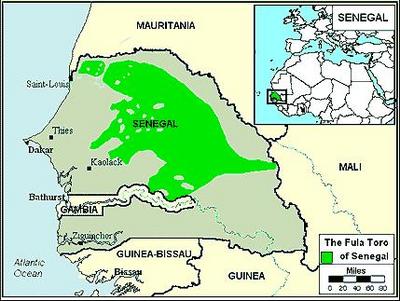
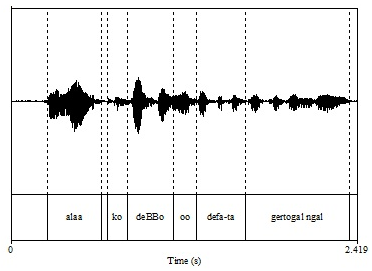
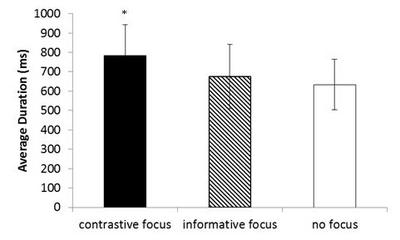
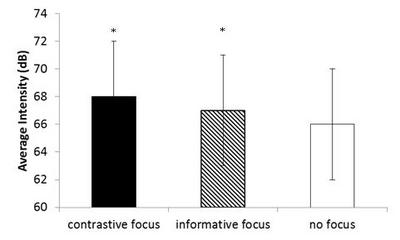
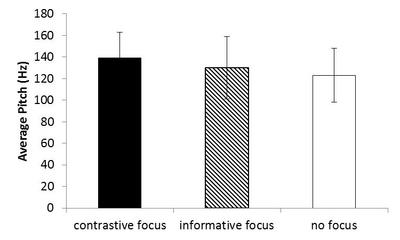
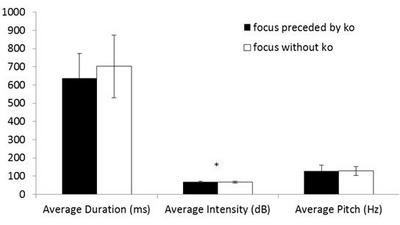
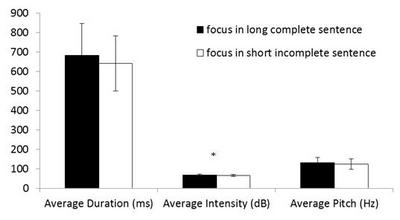
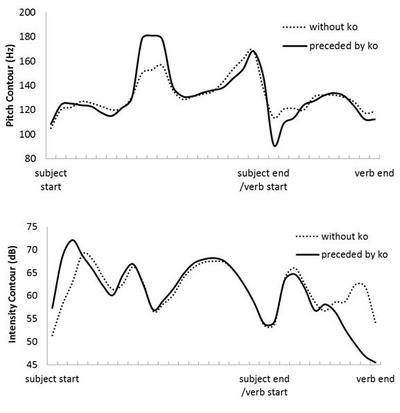

Kommentare ¶
Es liegen noch keine Kommentare vor.
Möchten Sie Stellung zu diesem Artikel nehmen oder haben Sie Ergänzungen?
Kommentar einreichen.